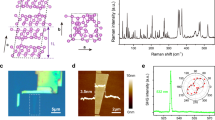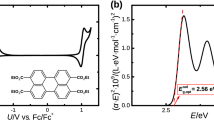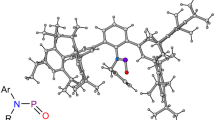Abstract
THE Phosphorus arc in air gives out a band spectrum in the ultra-violet, which is attributed to the PO molecule. The vibrational quantum analysis of these bands has been previously done by one of the authors1. The rotational structure analysis of the (0,0) band at λ2477.80 shows that it consists of six main branches, namely, P1 Q1 R1 and P2 Q2 R2 and two other faint satellite branches. For low quantum numbers, the satellite branches RQ21, QP21, PQ12 and QR12 are superposed on the main branches. The intensity of the lines of the different branches satisfy the criterion of a 2 2 transition. The band structure is analogous to the bands of NO1 as is anticipated from theoretical considerations. The following molecular constants (cm1 units) have been obtained.
This is a preview of subscription content, access via your institution
Access options
Subscribe to this journal
Receive 51 print issues and online access
$199.00 per year
only $3.90 per issue
Buy this article
- Purchase on SpringerLink
- Instant access to full article PDF
Prices may be subject to local taxes which are calculated during checkout
Similar content being viewed by others
References
P.N. Ghosh and G. N. Ball, Z. Physik., 71, 362; 1931.
Author information
Authors and Affiliations
Rights and permissions
About this article
Cite this article
GHOSH, P., GUPTA, A. Ultra-Violet Bands of Oxide of Phosphorus. Nature 131, 841 (1933). https://doi.org/10.1038/131841a0
Issue date:
DOI: https://doi.org/10.1038/131841a0



